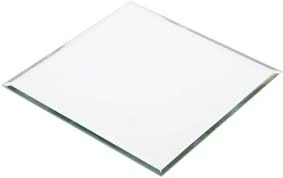

Reflective Glass Panels A Modern Architectural Marvel
In the realm of contemporary architecture, reflective glass panels have emerged as a transformative element, embodying a blend of aesthetic appeal and functional efficiency. These panels, renowned for their ability to reflect surroundings and enhance natural light, play a vital role in modern building design. Their versatility caters to various architectural styles and purposes, making them a sought-after choice for architects and builders alike.
The Aesthetic Value of Reflective Glass Panels
One of the most compelling advantages of reflective glass panels is their striking aesthetic quality. When incorporated into a building's facade, these panels can dramatically alter its appearance. The reflective surface acts like a mirror, creating a visual dialogue between the structure and its environment. For instance, a skyscraper clad in reflective glass not only stands tall against the skyline but also captures the beauty of the cityscape, sky, and surrounding nature. This interaction fosters a sense of harmony between the building and its context, reinforcing the idea of architecture as a participant in the landscape rather than an imposition on it.
Furthermore, reflective glass panels can contribute to a building's identity, allowing it to stand out or blend seamlessly with its surroundings. Cities around the world are increasingly adopting this trend; structures such as the glass-clad Apple Park in Cupertino and the iconic Torre Glòries in Barcelona showcase how reflective materials can enhance both the structure’s silhouette and its relationship with the urban environment.
Energy Efficiency and Sustainability
Apart from their aesthetic contributions, reflective glass panels are also lauded for their energy efficiency. By minimizing heat gain through their reflective properties, these panels help regulate indoor temperatures, thereby reducing the energy required for heating and cooling. In regions with high sunlight exposure, buildings with reflective glass can significantly decrease reliance on air conditioning systems. This energy efficiency not only leads to lower utility bills but also aligns with sustainable building practices, an increasingly critical aspect of modern architecture.

Moreover, many manufacturers are now producing reflective glass panels that incorporate advanced coatings to further improve performance. These coatings can limit solar glare while maximizing natural light penetration, striking a balance between bright interiors and energy savings. As sustainability becomes a priority in construction, adopting reflective glass panels can contribute to LEED certification and other green building ratings.
Challenges and Considerations
While the benefits of reflective glass panels are manifold, there are also challenges that architects and builders must navigate. One significant concern is the potential for solar glare and heat reflection affecting nearby properties and public spaces. This can lead to discomfort for occupants and passersby, sparking controversy and opposition to new developments. Therefore, careful planning and site analysis are essential to mitigate these issues.
Additionally, the maintenance of reflective glass surfaces can be more demanding than traditional materials. They require regular cleaning to maintain their reflective properties and visual appeal, especially in urban environments where pollution and grime can accumulate rapidly. Building owners must consider these maintenance implications when opting for reflective glass finishes.
Conclusion
Reflective glass panels represent a remarkable fusion of beauty and functionality in modern architecture. Their ability to enhance aesthetic appeal, improve energy efficiency, and engage with the environment makes them a compelling choice for contemporary structures. As cities continue to evolve and expand, the use of reflective glass panels is set to grow, contributing to innovative designs that are both visually stunning and mindful of sustainability.
Ultimately, while there are challenges to consider, the advantages offered by reflective glass panels can transform the architectural landscape, allowing buildings to not only serve their intended functions but to do so within a captivating and dynamic context. As we look to the future of architecture, reflective glass panels will undoubtedly remain at the forefront of design innovation, embodying the ideals of modernity and resilience in our built environment.